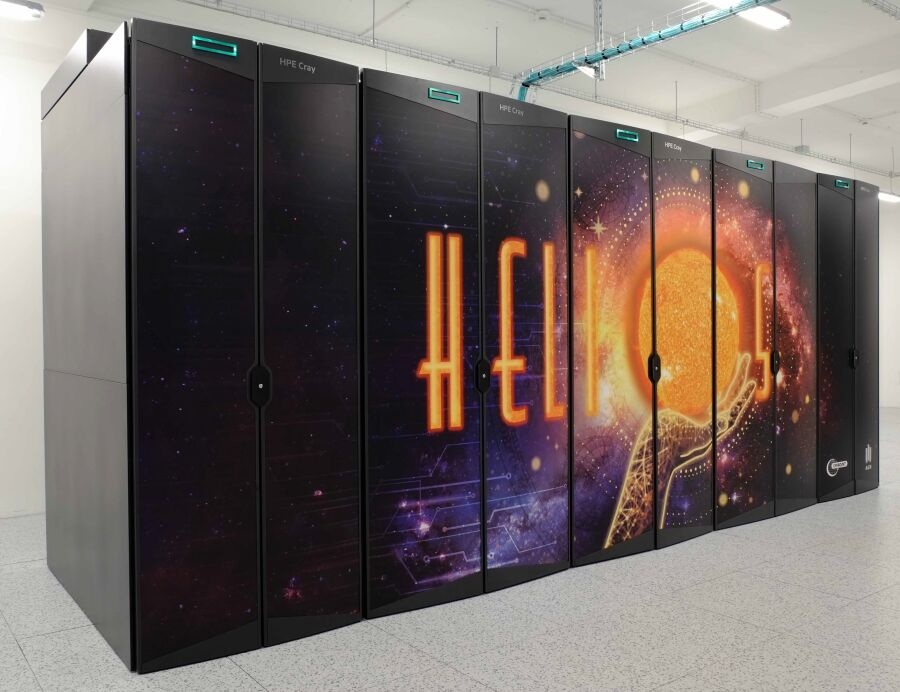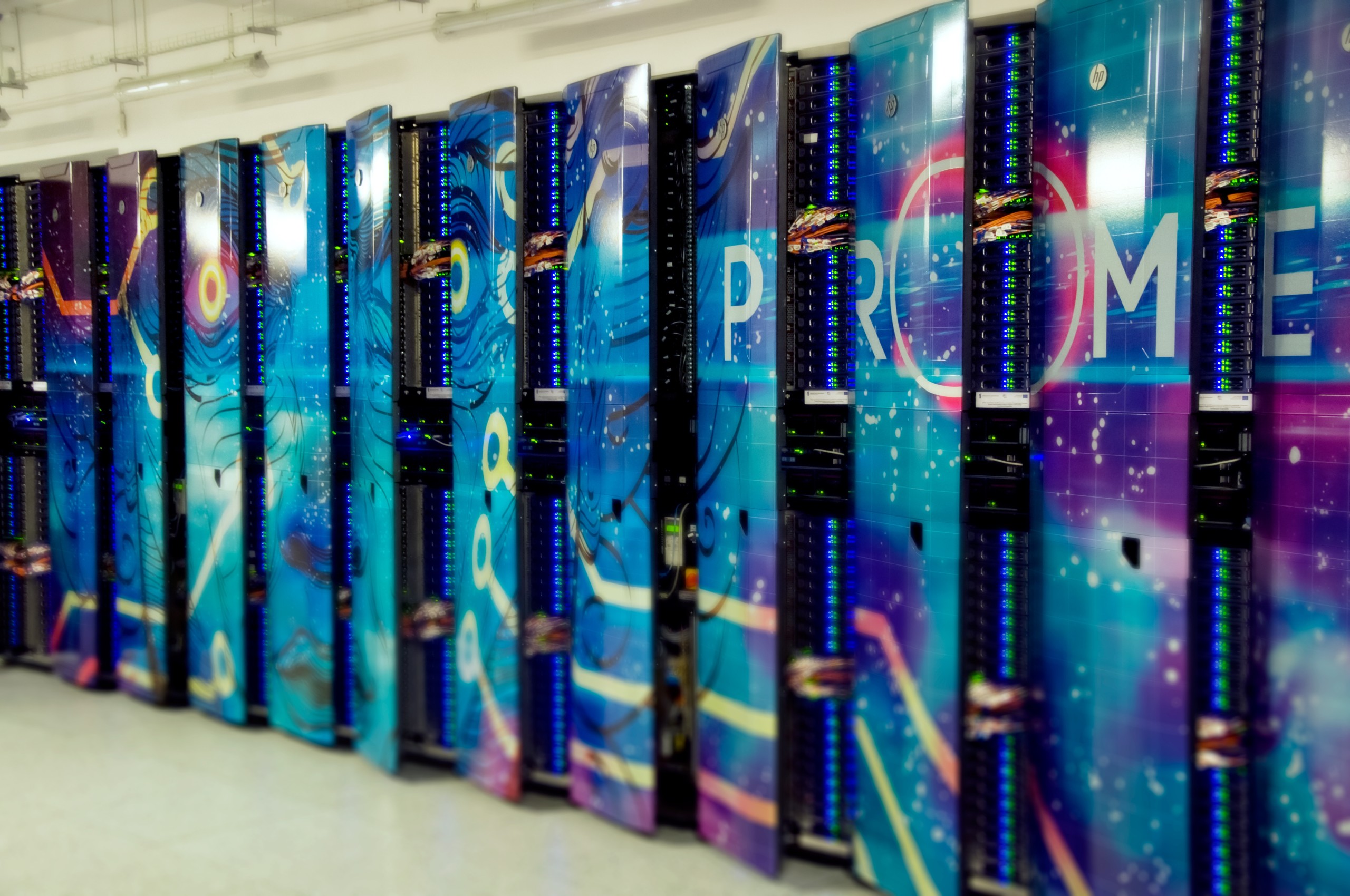Helios

Helios, a new light for innovation in Polish science and economy
Helios has 36 PFLOPS of theoretical computing power, more than 108 thousand computing cores, 460 TB of RAM, and 17.5 PB of disk system capacity, which together offer performance of almost 2 TB/s.
The supercomputer was built according to Cyfronet's design by Hewlett-Packard Enterprise based on the HPE Cray EX4000 platform. It consists of three computing partitions:
- CPU equipped with 82 944 AMD Zen4 computing cores and 220 TB of DDR5 RAM,
- GPU equipped with 440 NVIDIA Grace Hopper GH200 superchips,
- INT for interactive work, equipped with 24 NVIDIA H100 accelerators and fast local NVMe memory.
The Helios disk subsystem consists of two types of Lustre file systems: scratch with a capacity of 1.5 PB and a speed of over 1.8 TB/s and project with a capacity of 16 PB and a speed of almost 200 GB/s. All supercomputer components are connected via the Slingshot network with a speed of 200 Gb/s. The HPE Cray EX4000 platform, based on which Helios was built, is also used in constructing the fastest supercomputers in the world (El Capitan, Frontier) and Europe (LUMI). Thanks to direct liquid cooling of the CPU and GPU partitions, it is possible to achieve a very low PUE (Power Usage Effectiveness) for the system, increasing its energy efficiency and reducing operating costs. Additionally, thanks to the recovery of waste heat produced by Helios, it is possible to use it for heating.
Helios' computing power for AI computing is 1.8 ExaFlops.
Helios carries out many research projects for scientists from all over Poland, including in chemistry, physics, materials engineering, energy, medicine, biology and artificial intelligence. Helios was built as part of a project under the Intelligent Development Operational Program, so its computing power can also be used commercially by the economy.
Learn how to get Access to the Helios supercomputer.
Check out the Helios supercomputer documentation.
See the rankings Helios has achieved on the TOP500 and Green500 lists.



